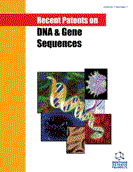Abstract
The most critical issue for the application of high affinity monoclonal antibodies is their creation. Here, we summarize the cellular and molecular mechanisms by which high affinity antibodies are generated, and then review the attempts of many investigators to create high affinity monoclonal antibodies against various target molecules. High affinity monoclonal antibodies are generated by one or a combination of the following three major methods. (1) The improvement of antibody affinity by introducing mutations in the immunoglobulin V-region genes by in vitro mutagenesis. (2) Screening many clones from a random combinatory repertoire of IgV-region genes using a phage library established in yeast or bacteria. (3) Attempting to introduce many somatic hypermutation of IgV-region genes. We summarize the advantages and applications of each of these methods including recent patents to facilitate informed individual choice. We also extend our review to the current creation of antibodies for HIV research.
Keywords: High affinity monoclonal antibody, V-region mutation, B cell, transgenic mouse, antibody drug, new diagnostics, HIV-1
 7
7

